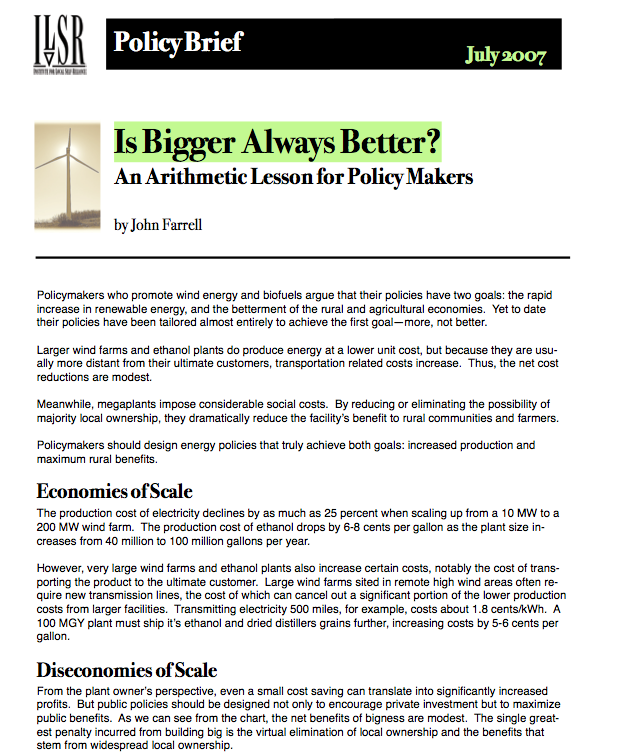This July 2007 policy brief by John Farrell is a companion piece to the Wind and Ethanol: Economies and Diseconomies of Scale report. Policymakers who promote wind energy and biofuels argue that their policies have two goals: the rapid increase in renewable energy, and the betterment of the rural and agricultural economies. Yet to date
their policies have been tailored almost entirely to achieve the first goal — more, not better.
Larger wind farms and ethanol plants do produce energy at a lower unit cost, but because they are usually more distant from their ultimate customers, transportation related costs increase. Thus, the net cost reductions are modest.
Meanwhile, megaplants impose considerable social costs. By reducing or eliminating the possibility of majority local ownership, they dramatically reduce the facility’s benefit to rural communities and farmers. Policymakers should design maximum rural benefits.



